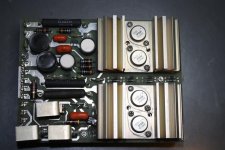Old Computers
Veteran Member
My multimeter is a Cen-Tech 11 function multimeter with audiable continuity. I also have another one that I don't use much. It is a table top multimeter with similar functionality and is probably of a higher quality (I forget the brand and model).
The spare parts/junk box is virtually non-existent. I only have a few resistors and small capacitors around right now. There is a local surplus store that I can go to get common and obscure parts if I need them.
The spare parts/junk box is virtually non-existent. I only have a few resistors and small capacitors around right now. There is a local surplus store that I can go to get common and obscure parts if I need them.



